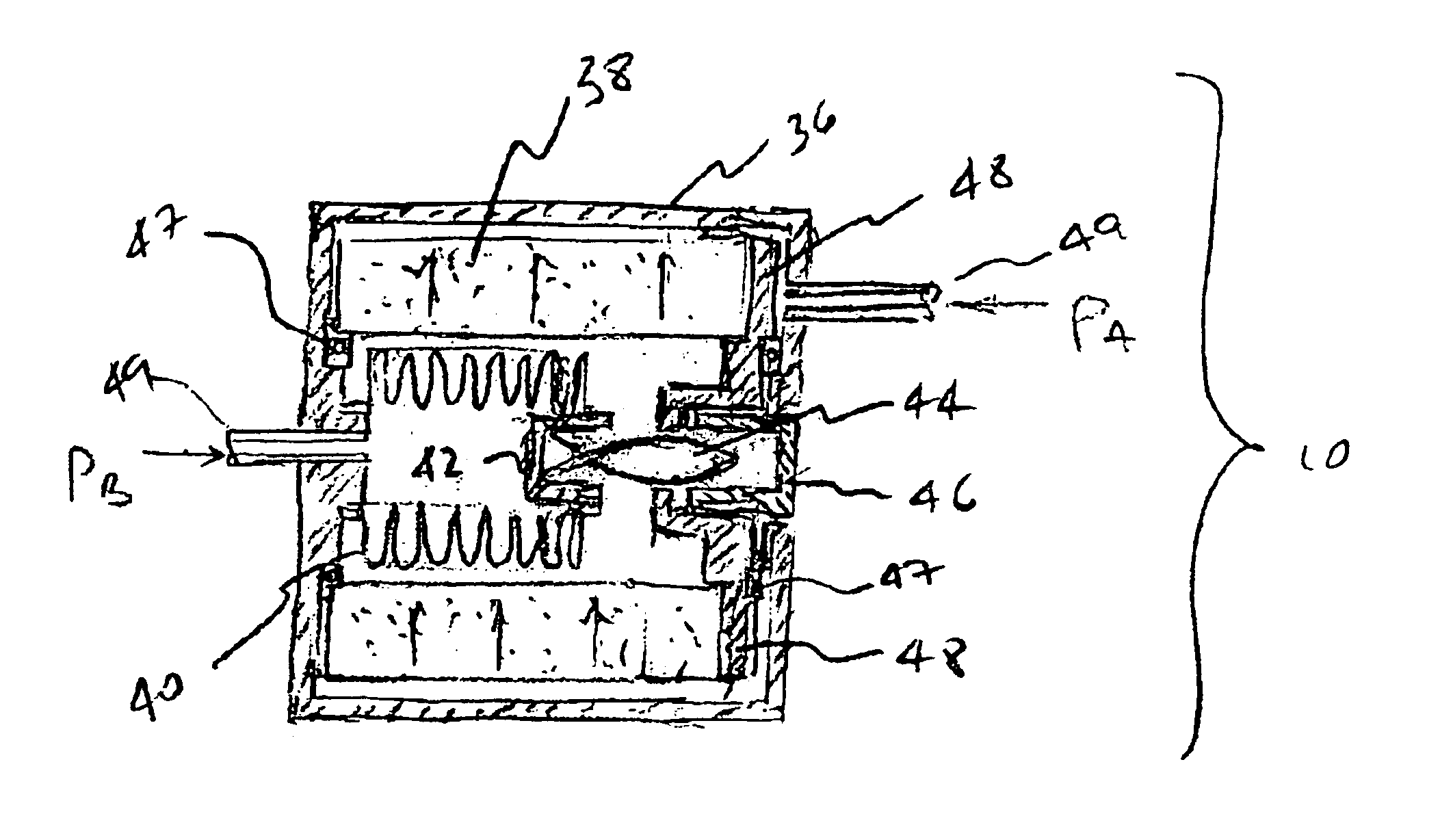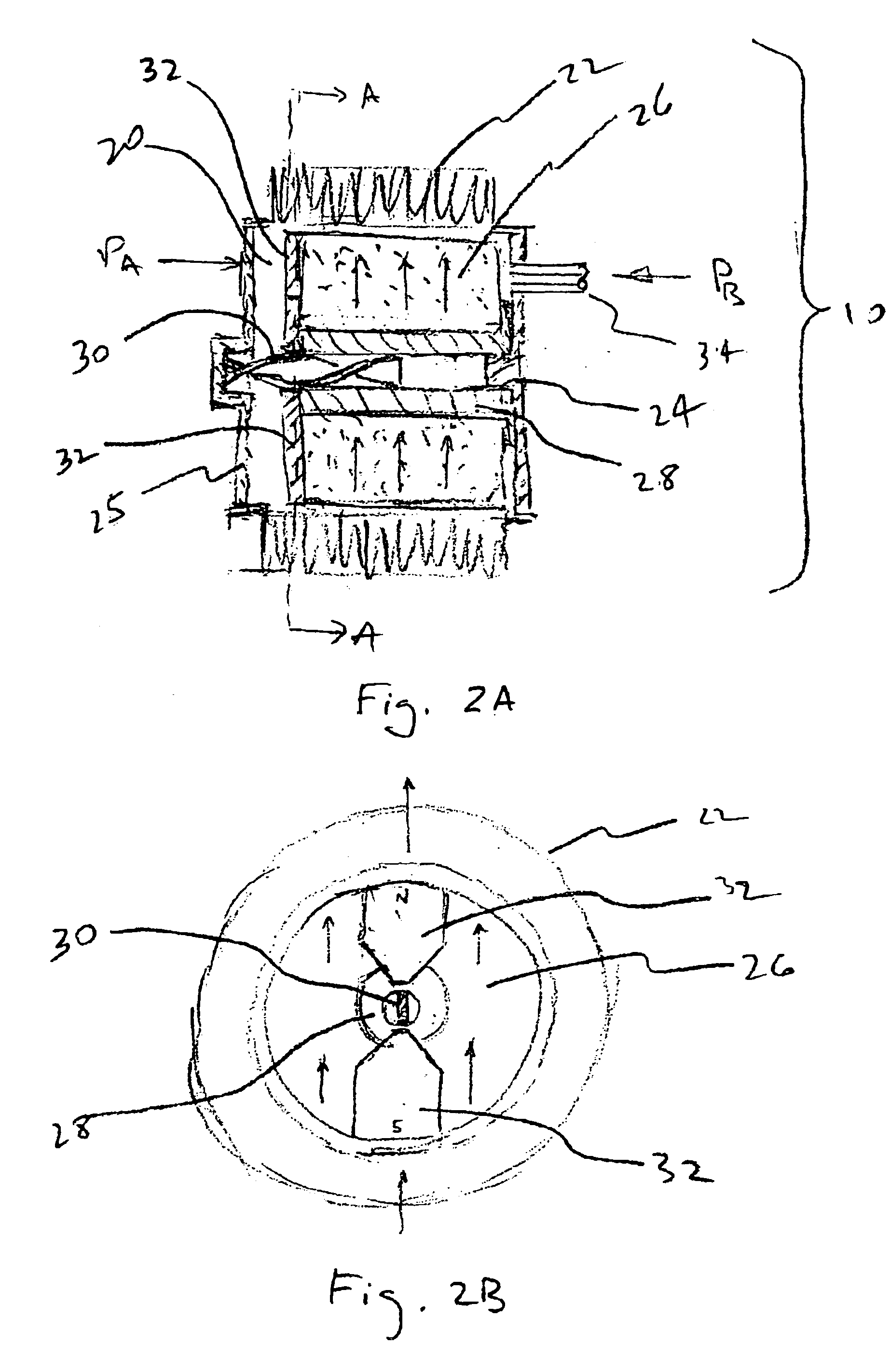Magnetically coupled tire pressure sensing system
a tire pressure sensing and magnetic coupling technology, applied in the direction of fluid pressure measurement, fluid pressure measurement using inductance variation, instruments, etc., can solve the problem of periodic need to dismount tires to replace batteries, inability to detect anomalous pressure in all tires, etc., and achieve the effect of low cos
- Summary
- Abstract
- Description
- Claims
- Application Information
AI Technical Summary
Benefits of technology
Problems solved by technology
Method used
Image
Examples
Embodiment Construction
of the Tire Pressure Sender
FIG. 4A is an elevation view of a vehicle wheel 13 comprising tire 14 and rim 15.
FIG. 4B is a cross section view through tire 14, rim 15, and vehicle body member 52. Tire 14 and rim 15 form a pressure vessel 50. Within vessel 50 magnetically coupled pressure sender 10 is attached to valve stem 54. Alternatively, sender 10 may be part of valve stem 54. In response to the pressure within vessel 50 sender 10 produces a magnetic field 11 oriented at a characteristic “pressure angle”θ with respect to radius Rs of sender 10 from axle 51 of wheel 15. Magnetically coupled pressure reader 12 is located at radius Rr from the axle of wheel 15. Sender 10 need not be in the same plane perpendicular to axle 51 of wheel 13 as the plane with reader perpendicular to axle 51 of wheel 13. Furthermore, the orientation of axis of sender 10 may be arbitrary with respect to axle 51.
FIG. 5 shows a cross section of a magnetic pressure sender 10 combined with valve stem 54. Valve s...
PUM
 Login to View More
Login to View More Abstract
Description
Claims
Application Information
 Login to View More
Login to View More - R&D
- Intellectual Property
- Life Sciences
- Materials
- Tech Scout
- Unparalleled Data Quality
- Higher Quality Content
- 60% Fewer Hallucinations
Browse by: Latest US Patents, China's latest patents, Technical Efficacy Thesaurus, Application Domain, Technology Topic, Popular Technical Reports.
© 2025 PatSnap. All rights reserved.Legal|Privacy policy|Modern Slavery Act Transparency Statement|Sitemap|About US| Contact US: help@patsnap.com



